The signs and symptoms an individual experiences depend on the form of the disease they have.
Plaque Psoriasis
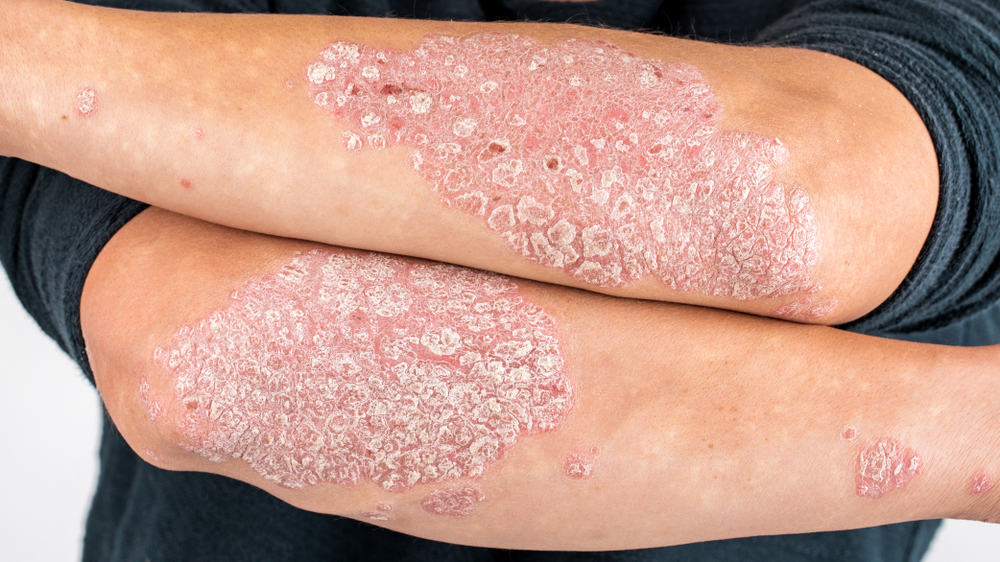
This is the most common form of psoriasis. Typical locations for the lesions associated with this form include the knees, scalp, lower back, and elbows.
Symptoms include:
- Patches of raised, extremely dry, thickened skin; these patches are referred to as “plaques”
- Sizes of these plaques vary
- Smaller plaques may join together, creating larger ones
- Scales cover some of the plaques; these scales are dry, thin, and have a silvery coating
- These plaques tend to itch, but scratching causes them to thicken even more
Inverse Psoriasis (Flexural or Intertriginous Psoriasis)
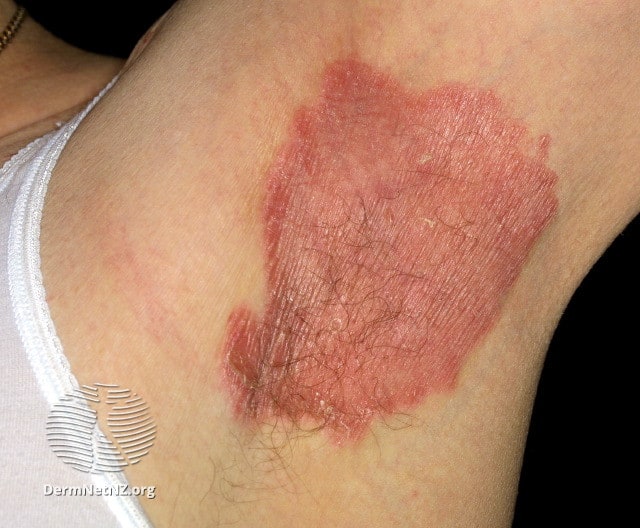
Bright red skin that is shiny and smooth develops in the areas of the body where skin touches skin, such as the armpits.
Symptoms include:
- Smooth patches of skin that are bright red and look “raw”
- Skin in affected areas is painful and/or feels sore
- Very little (if any) white coating over the area
Guttate Psoriasis
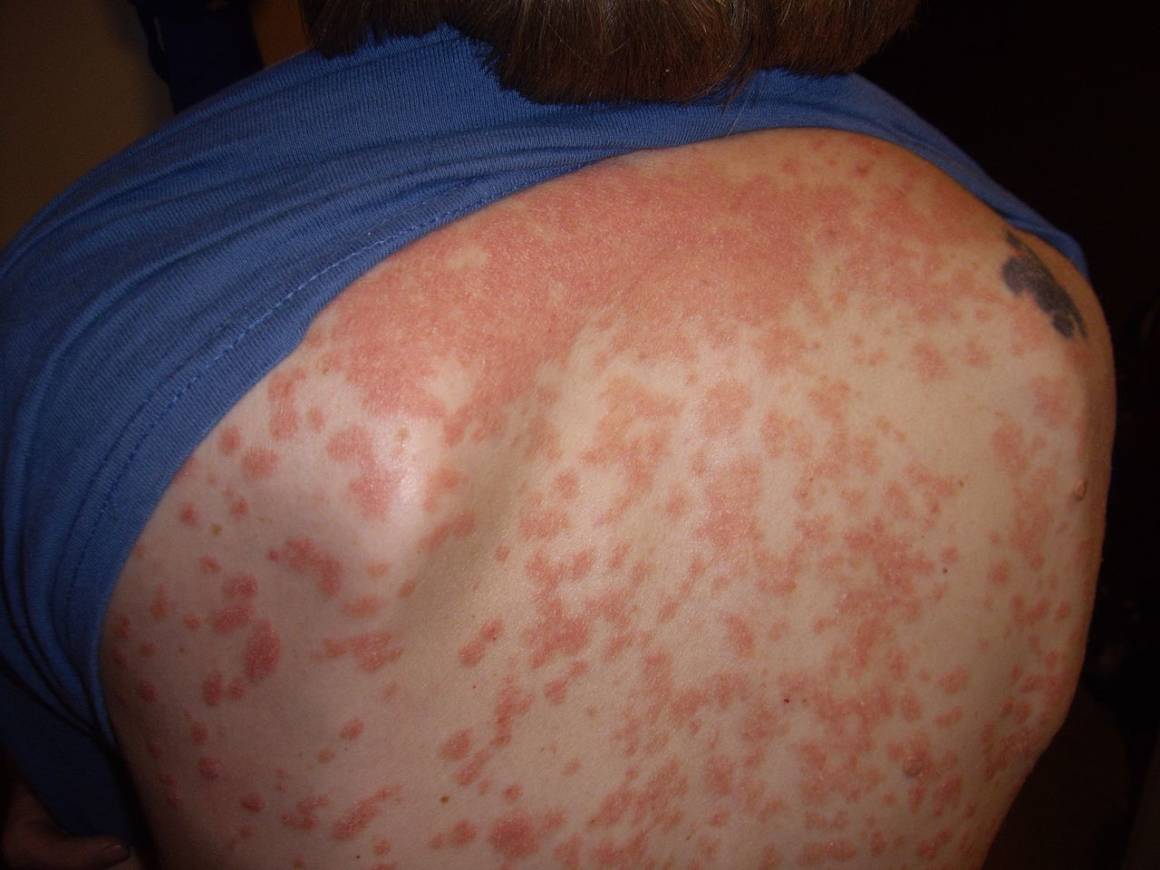
When guttate psoriasis flares up, tiny bumps develop on the skin of the legs, arms, and torso. On occasion, they will also develop on the ears, scalp, and face. Without treatment, these bumps usually diminish within a few weeks to a couple of months.
Symptoms include:
- Tiny, dot-like lesions
- Lesions are scaly/crusty
- Color of the lesions ranges from salmon-colored to pink
Erythrodermic Psoriasis

Most of the people who develop this form of psoriasis already have another form of the disease. Before the other form of psoriasis progresses into erythroderma, the individual will notice that their current form is getting worse or that treatment does not help. Classic symptoms include fiery red skin that covers most of the body.
Since this form of psoriasis can be fatal, if symptoms develop, seeking treatment is essential.
Symptoms include:
- Red skin covers most of the body
- Skin on the body appears as if it has been burnt
- Severe itching, a fast heartbeat, and muscle weakness may be present
- Fever and chills may present
Localized Pustular Psoriasis
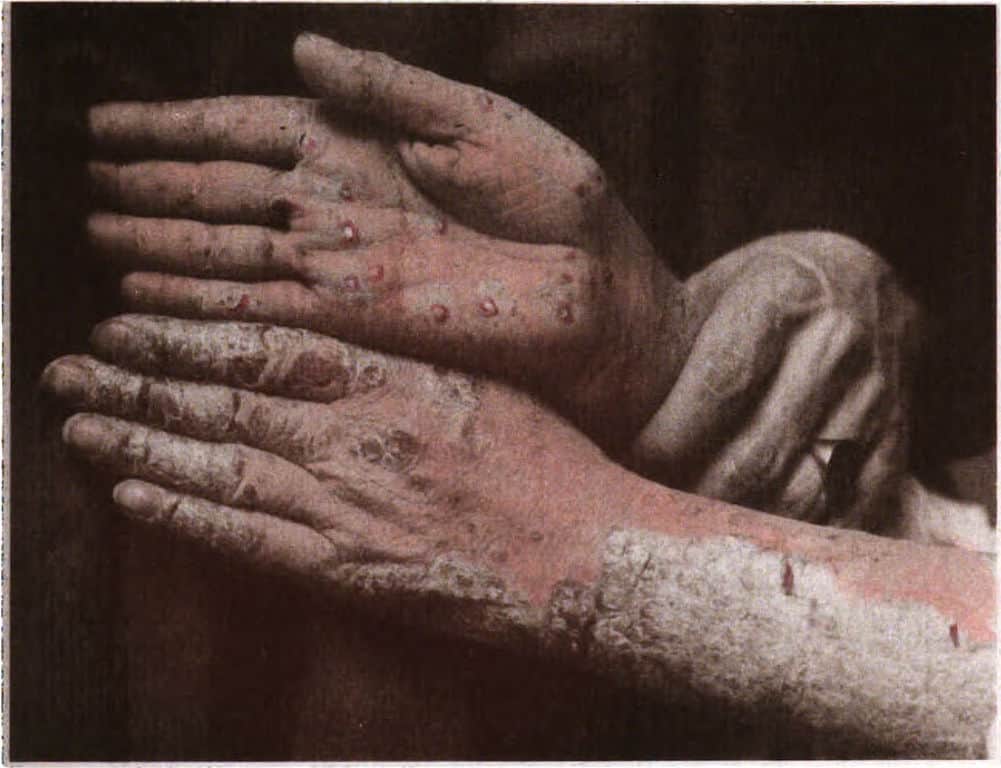
Individuals with this form have pus-filled bumps that resemble blisters. The pus inside does not consist of bacteria, but of white blood cells. This form of the disease usually develops on the hands and feet.
Symptoms include:
- Red, inflamed skin with tiny pus-filled blisters
- Blisters are usually on the hands and feet
- As the pus-filled blisters dry, brown spots develop; these spots may have crusty tops
- Skin may be extremely sore
- The skin itself may hurt
Acute Generalized Pustular Psoriasis (von Zumbusch Psoriasis)
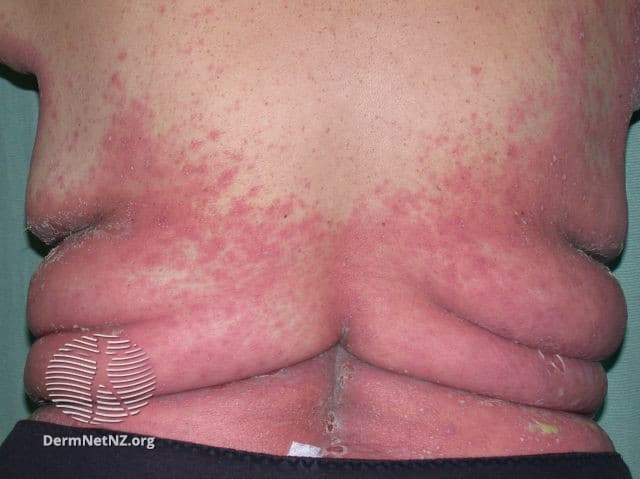
This form of pustular psoriasis is extremely rare and involves the development of pus-filled blisters over much of the body within a relatively short period of time.
The onset of this disease involves the skin suddenly turning red, dry, and tender. The individual may feel extremely ill, have a fever, a headache, and muscle weakness. Within hours, pus-filled bumps develop over much of the skin. Usually within just a day, these bumps open, leaking pools of pus onto the skin. As the pus dries, the skin itself dries out and begins peeling. After the skin peels off, a glazed, smooth surface is revealed underneath.
Since this form of psoriasis can be life-threatening, seeking medical care immediately is essential.
Symptoms include:
- Skin on the majority of the body turns red, dry, and tender
- A few hours later, blisters filled with pus develop
- Within a day, these blisters break open, leaking pus all over the skin
- While the pus is drying, so is the skin; the skin dries out and can be peeled off
- Once peeled off, a smooth, glazed surface of skin lies beneath
- The cycle may begin again in a few days or weeks
- A fever, headache, overall feeling of sickness, and muscle weakness might also be present
- Can be fatal; immediate medical care is essential
Psoriatic Arthritis

This condition typically develops when an individual is somewhere between 30 and 50 years of age; however, it can become evident at any age. This disease is more likely to occur in individuals who have severe psoriasis. Initially, the signs of psoriatic arthritis may be subtle, starting with just a swollen, tender finger joint.
Just like psoriasis, this disease is not curable. However, treatment can keep the arthritis from progressing further. This last point is important because if psoriatic arthritis progresses, it can lead to disability.
Symptoms include:
- A joint on the finger or toe is inflamed and tender
- Stiffness upon waking that fades throughout the day
- Heel pain and inflammation on the back of the leg (directly above the heel)
FAQ
What does psoriasis look like when it starts?
In its early stages, psoriasis looks similar to eczema. Symptoms include red, swollen, and itchy areas of skin. As the disease progresses, the differences in eczema and psoriasis symptoms become evident. With psoriasis, the lesions begin developing in specific areas (e.g., knees, elbows). In addition, silvery scales are unique to psoriasis.
How do you know if you have psoriasis?
Individuals who have any type of rash that will not clear up with over-the-counter medications may have this condition. Seeking medical treatment as soon as possible is recommended. After all, treatment relatively soon after onset typically improves the patient’s prognosis.
Can psoriasis go away on its own?
The guttate form can go away on its own. Although the other forms of the disease will not go away completely, they can go into remission.
Disclaimer: this article does not constitute or replace medical advice. If you have an emergency or a serious medical question, please contact a medical professional or call 911 immediately. To see our full medical disclaimer, visit our Terms of Use page.





